In the world of digital audio, Audacity stands out as a beacon for both beginners and seasoned users. This free, open-source software offers a comprehensive suite of tools for recording and editing audio, making it a popular choice for podcasters, musicians, and content creators. In this guide, we will walk you through the basics of using Audacity to record audio from your desktop and with a microphone. Whether you’re embarking on a new podcast, recording music, or simply exploring the realms of sound, Audacity is your reliable companion. And for those seeking to enhance their projects with professional-grade digital content, Envato Elements presents an inexhaustible resource. Let’s dive into the world of Audacity and unlock the potential of your audio creativity.
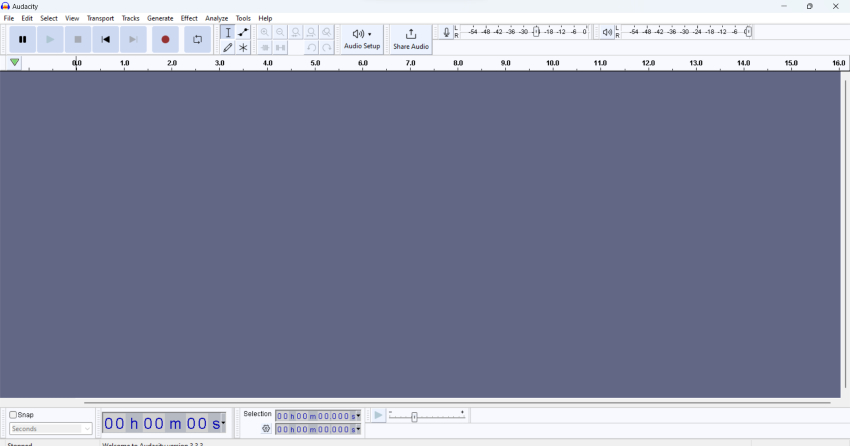
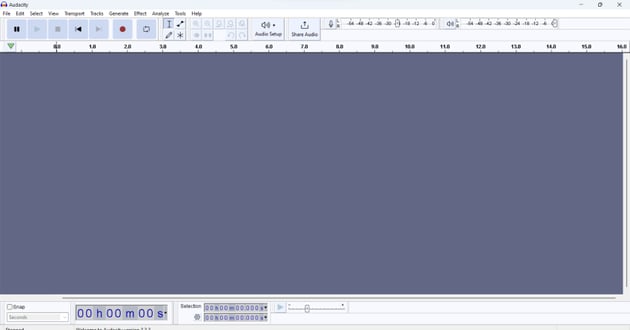
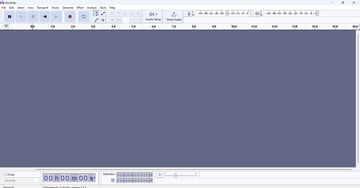
Getting Started with Audacity
Downloading and Installing Audacity
The first step in your audio recording journey is to acquire Audacity. This powerful tool is just a few clicks away:
- Navigating to Audacity: Head over to the official Audacity website by clicking here. Here, you’ll find the latest version of Audacity, tailored for various operating systems including Windows, Mac, and Linux.
- Downloading the Software: Click on the prominent ‘Download Audacity‘ button. This step is straightforward and designed to be user-friendly. Make sure to download the version compatible with your operating system.
Installing Audacity: Once the download is complete, open the installer. Follow the simple installation instructions, and within minutes, Audacity will be ready to use on your desktop.
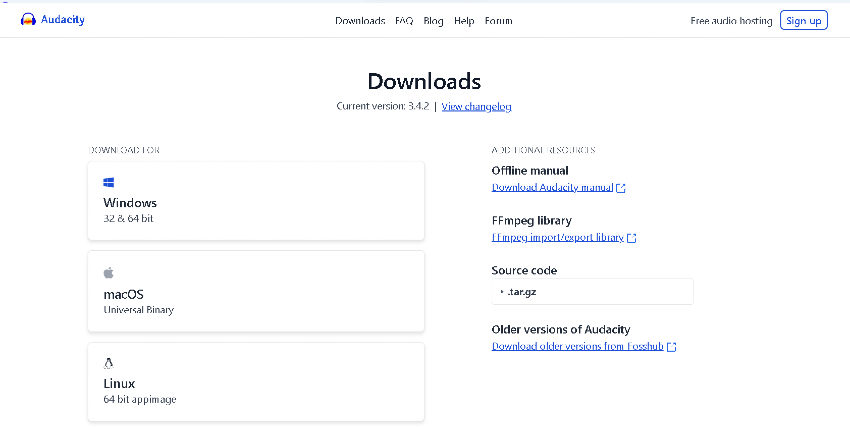
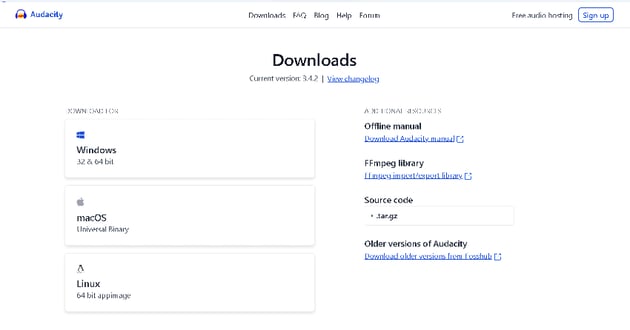
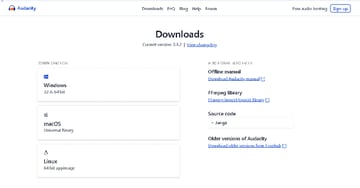
Audacity website downloads page thumbnail for article on how to record desktop audio with Audacity.
Understanding Audacity’s Interface
Upon launching Audacity, you’re greeted with a clean and intuitive interface. It might seem daunting at first, but with a bit of exploration, you’ll find it quite straightforward. The main elements include the menu bar at the top, the toolbars for recording and playback, and the workspace where your audio tracks will appear.
Setting Up Your Microphone
Connecting Your Microphone
Before you can start recording, you need to ensure your microphone is properly set up:
- USB Microphones: If you’re using a USB microphone, the setup is usually plug-and-play. Simply connect the microphone to a USB port on your computer, and it should be recognized automatically.
- Analog Microphones: For analog microphones, you may need an audio interface. Connect your microphone to the interface, and then connect the interface to your computer.
Configuring Your Microphone in Audacity
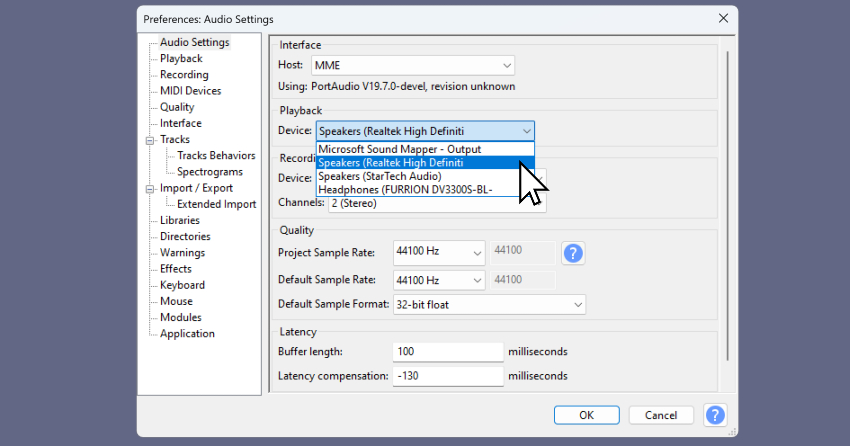
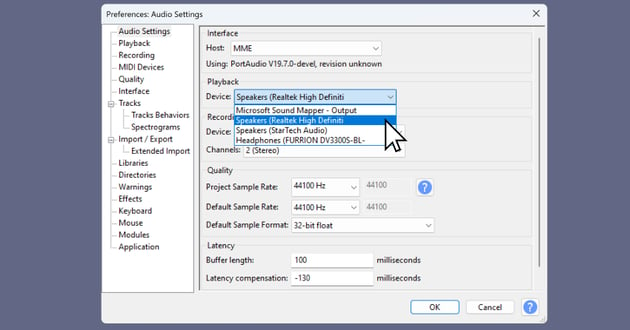
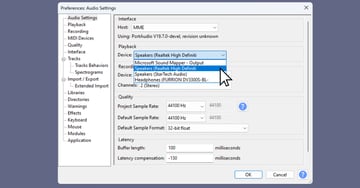
Once your microphone is connected, it’s time to configure it in Audacity:
Step 1: Accessing Microphone Settings: Open Audacity, and go to ‘Edit‘ > ‘Preferences‘ on Windows, or ‘Audacity‘ > ‘Preferences‘ on a Mac.
Step 2: Selecting the Microphone: In the ‘Devices‘ section of the Audio Settings, you’ll find options for both playback and recording devices. Under ‘Recording‘, select your connected microphone from the dropdown menu.
Step 3: Adjusting the Input Levels: To ensure the best recording quality, it’s important to adjust the input levels. Speak into your microphone and watch the meter toolbar. The bars should move, indicating that the microphone is picking up sound. Adjust the input level so that the bars reach around -12 dB to -6 dB, which is an optimal range for recording without distortion.
Choosing the Right Host:
- To record more then just your microphone, on Windows, set the ‘Host’ to ‘Windows WASAPI’. This option allows you to record not just the microphone input but also the audio played by your computer, which is useful for capturing sound from videos or other applications.
- On Mac, choose ‘Core Audio’ for the same functionality.
Testing Your Microphone and Speakers
- Microphone Test: Speak into your microphone and observe the level meters in Audacity. Adjust the microphone input level to avoid peaking (going into the red zone) for the best sound quality. You can test your microphone levels in the ‘Preferences: Recording’ menu in the ‘Recording’ tab.
- Speaker Test: To test your outputs, play a pre-recorded audio file in Audacity and listen through your speakers or headphones to ensure clear playback.
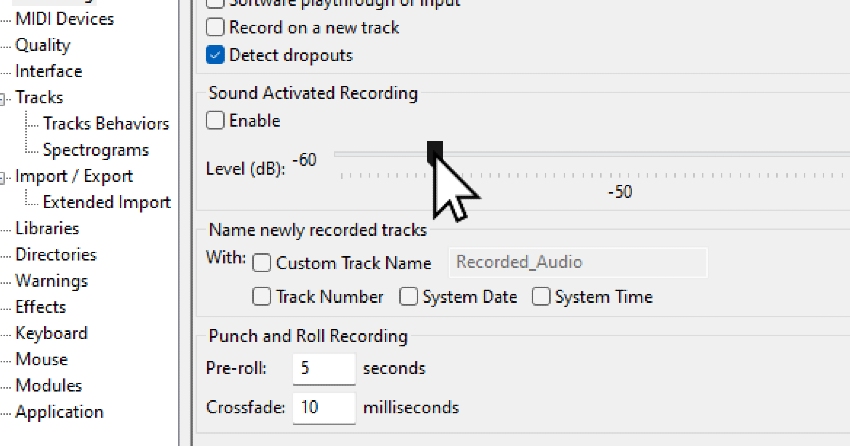
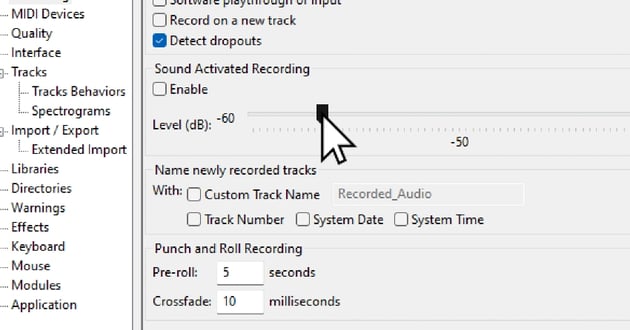
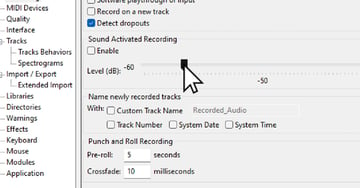
Recording Channels
- In the same Preferences, in the ‘Audio Settings’ tab window, under the ‘Recording’ tab, you can choose between ‘Mono’ and ‘Stereo’ recording channels. Mono is ideal for most voice recordings, while Stereo is preferred for music or where directional sound is important.
Recording Audio
Now that your setup is complete, let’s start recording audio in Audacity.
Starting Your Recording
- Initiating the Recording: In Audacity, simply click the red ‘Record‘ button to start recording. As you record, you’ll see waveforms being created in real-time on the track, representing the audio you’re capturing.
- Performing Your Audio Activity: Whether you’re speaking, singing, playing an instrument, or recording any other type of sound, ensure you’re within a good range of your microphone and maintain consistent audio levels.
Monitoring and Adjusting Levels
- Watching the Levels: Keep an eye on the level meters while recording. The goal is to keep the levels peaking around -6 dB to avoid distortion.
- Adjusting on the Fly: If the levels are too high or too low, you can adjust the microphone input level in real-time using the slider next to the microphone icon.
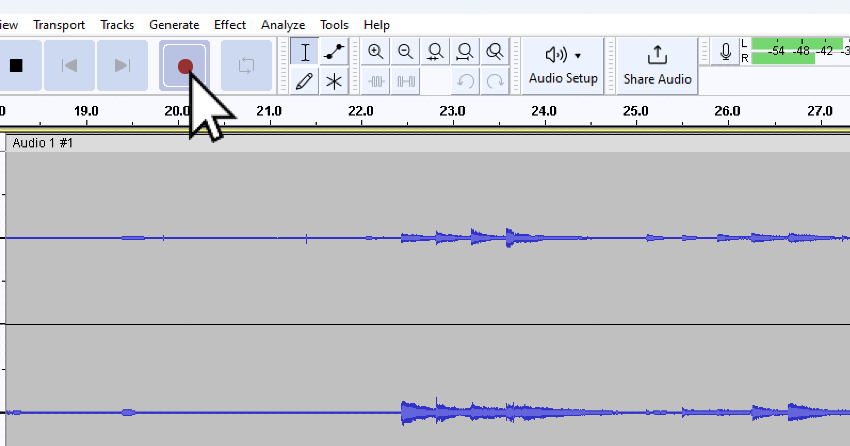
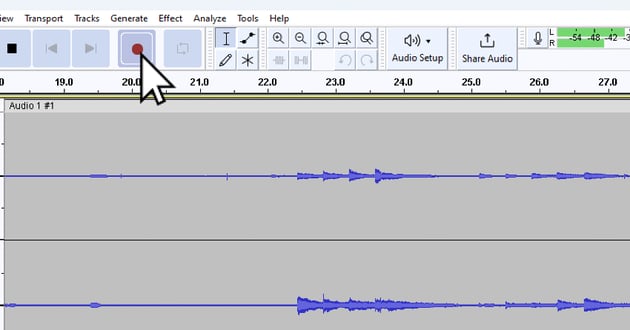
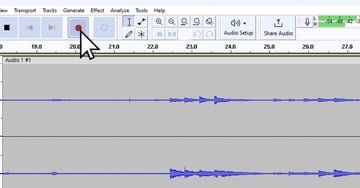
Pausing and Stopping the Recording
- Pausing: If you need to take a break, click the ‘Pause‘ button. This will halt the recording without creating a new track. Click ‘Pause‘ again to resume recording.
- Stopping: Once you’re done, click the yellow ‘Stop‘ button. This action finalizes the recording on the current track.
Tips for a Successful Recording Session
- Minimizing Background Noise: Try to record in a quiet environment to reduce unwanted background noise.
- Using Headphones: Wearing headphones while recording can help you monitor the audio quality and avoid feedback from speakers.
Editing and Saving Your Audio
After recording, Audacity provides an array of editing tools to refine your audio. Let’s explore how you can edit and save your recordings.
Basic Editing Tools in Audacity
- Selection Tool: This is your primary tool for selecting portions of audio. Use it to highlight a specific area you want to edit or apply effects to.
- Cut, Copy, and Paste: Similar to text editing, you can cut, copy, and paste audio sections. This is useful for removing unwanted parts or rearranging segments.
- Zoom In and Out: For detailed editing, use the zoom feature to get a closer look at the waveforms. This helps in making precise cuts or adjustments.
- Effects: Audacity comes with a variety of effects such as Normalize, Compressor, Equalization, and Noise Reduction. These can enhance your audio, reduce noise, or adjust levels.
Saving Your Project
- Saving for Later Editing: Go to ‘File‘ > ‘Save Project‘ to save your work as an Audacity project. This format is not playable in standard audio players but allows you to return and make further edits.
Exporting Your Recording
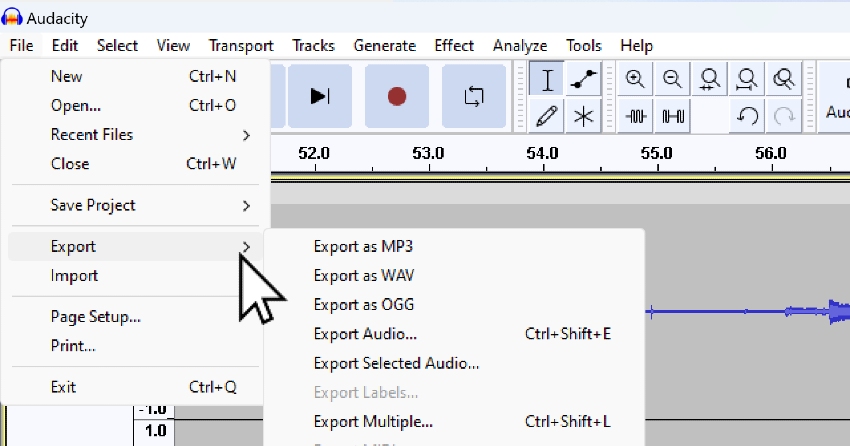
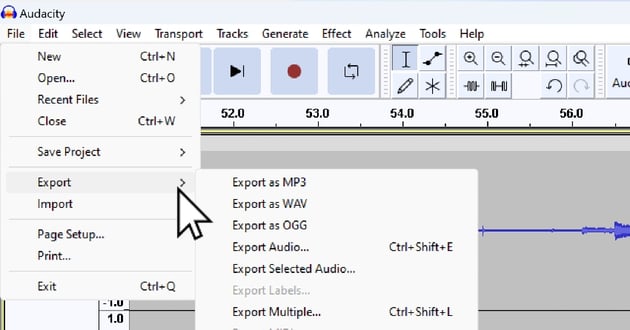
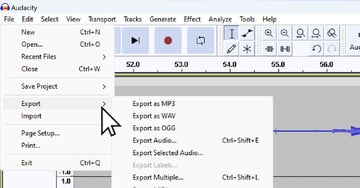
- Choosing the Format: Audacity lets you export your recording in various formats like MP3, WAV, and others. WAV is ideal for high-quality, lossless audio, while MP3 is more suitable for sharing due to its smaller file size.
- Exporting the File: Navigate to ‘File‘ > ‘Export‘ and choose your desired format. You’ll be prompted to name your file and choose a save location.
- Metadata: When exporting, Audacity offers an option to add metadata such as artist name, track title, and album. This can be particularly useful if you’re producing music or podcasts.
Recording Desktop Audio
Recording desktop audio, like sounds from videos or applications, is straightforward in Audacity once you adjust a few settings:
Setting Up Audacity for Desktop Audio Recording
Step 1: Selecting the Correct Host:
- In Audacity, go to ‘Edit’ > ‘Preferences’ on Windows or ‘Audacity’ > ‘Preferences’ on Mac.
- Navigate to the ‘Devices’ section in the Audio Settings Tab.
- Under the ‘Host’ dropdown menu, select ‘Windows WASAPI’. This step is crucial as the loopback options are typically available only under this host setting.
Step 2: Choosing the Loopback Device:
- In the same ‘Recording’ section, in the ‘Devices’ item, look for the ‘Recording Device’ dropdown.
- Select the output device you want to record from, which should now appear with a ‘(loopback)’ tag in its name. For example, it could be listed as “Speakers (Realtek(R) Audio) – Loopback” or “Headset (loopback),” depending on your system and output device.
Step 3: Adjusting the Input Levels:
- As with microphone recording, adjust the input levels to avoid distortion. Play the audio you wish to record and observe the level meters, adjusting the input levels as needed.
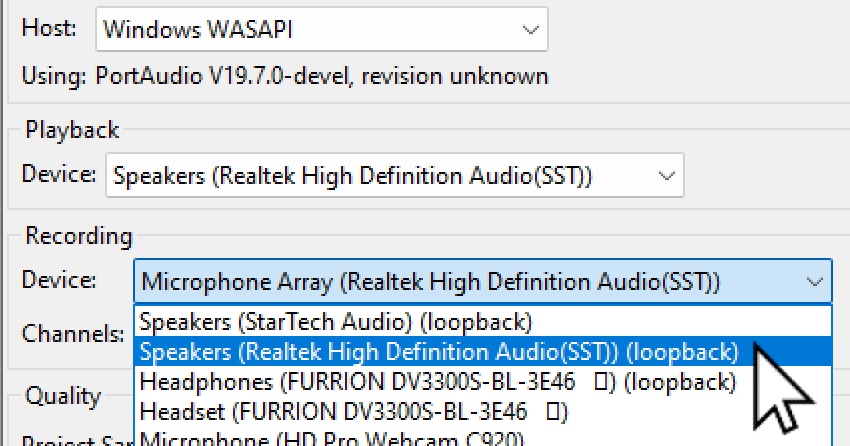
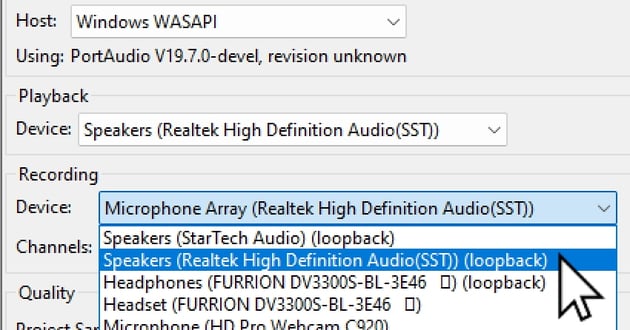
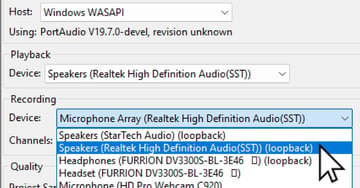
User accessing loop back options for Audacity recording software.
Recording the Desktop Audio
- With the loopback device selected, click the red ‘Record’ button in Audacity, then start playing the audio on your computer that you want to capture.
- Audacity will record the desktop audio, creating a waveform in real-time on the track.
Tips for Capturing Desktop Audio
- Close Unnecessary Programs: Ensure no other unwanted sounds or notifications are recorded by closing irrelevant applications.
- Monitor Using Headphones: It’s advisable to use headphones to monitor the recording, which helps prevent feedback loops and ensures you are only capturing the desired audio.
Advanced Tips and Tricks
After mastering the basics, you can explore Audacity’s advanced features to enhance your audio further. These tips will help you achieve a more professional sound quality.
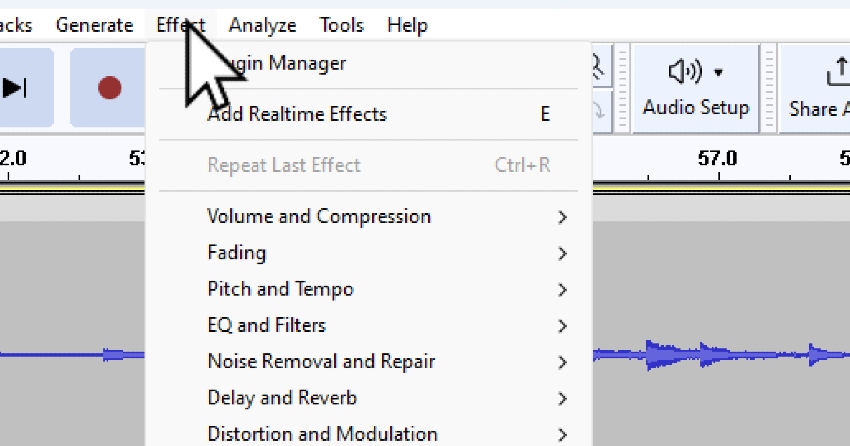
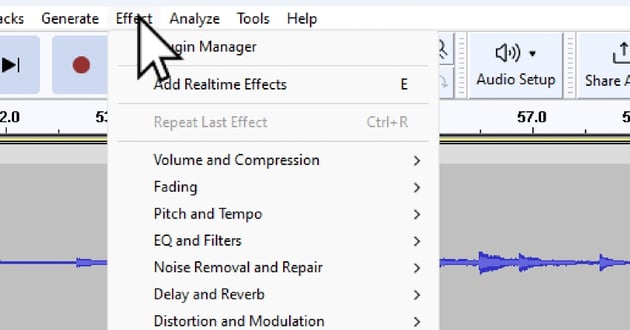
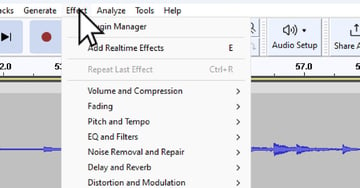
Enhancing Audio Quality
- Equalization (EQ): The EQ tool allows you to adjust the balance of frequencies. You can boost or cut specific frequency ranges to improve voice clarity or reduce unwanted noise like hums or hisses.
- Compression: This tool helps even out the volume levels by reducing the dynamic range. It makes quiet sounds louder and loud sounds quieter, resulting in a more consistent audio level throughout your recording.
- Noise Reduction: If your recording has background noise, like a hum or hiss, the Noise Reduction effect can help. Select a portion of the audio where only the noise is present, use it to set the noise profile, and then apply the effect to the entire track to reduce the unwanted noise.
Splicing and Mixing Tracks
- Splicing Audio: Use the selection tool to cut and rearrange parts of your recording. This is especially useful for podcast editing or creating seamless audio tracks.
- Mixing Tracks: You can import multiple audio tracks into Audacity (File > Import > Audio) and mix them. Adjust the levels of each track using the envelope tool or the gain sliders to balance the mix.
Advanced Export Options
- Multiple Formats: Audacity allows you to export your project in various formats, each suitable for different purposes. For instance, FLAC is great for lossless audio quality, while OGG might be preferred for web use due to its balance of quality and file size.
- Exporting Multiple Tracks: If you’re working with a multi-track project, Audacity lets you export each track individually or mix them down to a single stereo file.
Get Amazing Assets from Envato Elements (With Unlimited Downloads)
To further enhance your Audacity projects, consider the rich resources offered by Envato Elements. With its vast collection of high-quality audio tracks, sound effects, and royalty-free music, Envato Elements is an invaluable asset for any audio creator. Seamlessly integrate these professional-grade digital contents into your Audacity workflow, and give your projects that extra polish and depth they deserve.



Conclusion and Further Learning
Congratulations! You’ve now journeyed through the essentials of recording, editing, and exporting audio with Audacity. From setting up your microphone to mastering advanced editing techniques, you are equipped to create high-quality audio projects, whether for podcasts, music, or any other creative endeavor.